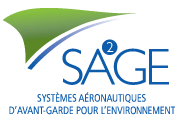FLYING LABORATORY (PMD1)
Bombardier, CMC Electronics and ARA Robotics, three Quebec companies, are seeking to increase their positioning in aircraft autonomy, a field that Quebec has been innovating in for several years and plans to grow in the coming decades. The Flying Laboratory will contribute to these plans by:
-
Developing and demonstrating new technologies for autonomous or single pilot aircrafts, particularly for autopilot and for navigation beyond the visual horizon;
-
Exploiting scaled-down flying models as a validation tool for new technologies for new aircraft, particularly to reduce greenhouse gas (GHG) emissions. This approach will reduce the test costs of these technologies and accelerate their implementation.
Many technologies will be developed such as alternative power and propulsion sources, product development techniques using scale models, and aerodynamic and structural configurations for conventional and Blended Wing Body (BWB) aircrafts. The prototypes will later be used to create large-scale drones.
Display solutions and robust drones
CMC Electronics, an expert in the manufacturing of cockpit systems, will collaborate on navigation and control solutions equipment (global positioning – GPS and flight management system – FMS) for the aircraft in addition to contributing to the display solutions for the ground cockpit.
Based in Montreal, ARA Robotics specializes in autonomous pilot technologies. It will contribute to the development of robust and efficient drones for industrial and commercial fields, along with contributing to the vision and detection solutions.
Divided into two phases, the project will begin with the development and adaptation of new and existing technologies that will be integrated and tested on a ground test bed for unconventional test vehicles (BWB). In the second phase, flight-tested prototypes – with both conventional and unconventional aircraft configurations – that are developed by the UAS Centre of Excellence (CED) of Alma, will be used to ameliorate the technologies developed in the first phase. This will establish new methods of testing the required components.
Integration of autonomous navigation systems
Using scalable schematics and aircraft model lists, the objective of the Flying Laboratory is to integrate autonomous navigation systems into drones that could operate with or without communicating with the ground station of CMC Electronics. Examples of integrated modules would be FMS, beyond visual line of sight (BVLOS), flight directors integrated with control functions. This platform will be installed in the flying laboratory of Bombardier. It contains a scale model of an aircraft with wings and blended body wings. The fuselage includes the necessary components for non-conventional aircrafts. Bombardier aims to reduce fuel consumption by 15 to 20 % while saving on development costs.
Mobilization of several universities and research centers
Several universities and research centers will participate in the design and calibration of the test avionics: McGill University, ÉTS, the Aerospace Technology Centre (ATC), CRIQ (climate testing chamber), University of Calgary and the Quebec Geomatics Center. Various SMEs will also collaborate on the project.
The project offers the opportunity to combine the knowledge of ARA, Bombardier, and CMC to develop technologies that will lead to the introduction of new performing products on the market. The technological development efforts dedicated to aircraft autonomy will not only contribute to increasing the market share of the three partners, but also fortify the aerospace sector of Quebec.


